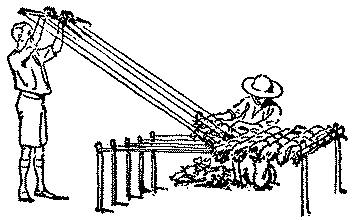We lost another chicken last night meaning that we’ve got something infectious. I didn’t have the stomach to do a post-mortem exam, nor would I know what to look for anyways (chicken CSI would make a nice class if only there were someone to teach it). I thumbed through Gail Damerow’s Chicken Health Handbook, but I don’t have much evidence to go on.
I didn’t see any obvious symptoms other than a very small amount of listlessness just before both chickens died and a bit of what might be bloody diarrhea on the roost. Mrs. Homegrown disinfected the coop as best she could and I swept out the bedding. A heat wave last week may have weakened the flock and helped bring this on.
We are now down to two chickens, one of whom does not lay any eggs. Looks like we’ll be either not be eating eggs or we’ll have to buy them at the farmers market for the next few months.
Mrs. Homegrown here:
I wanted to add that the remaining hens seem perfectly healthy. If they drop over dead tomorrow, it’s going to be quite a headscratcher. They’re out happily roaming in our yard right now, all bright-eyed and perky. I’ve eyeballed them for signs of respiratory infection or diarrhea, and see nothing. All the poop under their roost looked fine. It’s a mild day, as was yesterday–so I don’t know if heat was the culprit in either death. The possible bloody diarrhea that Erik mentions above consisted of a couple of small dark stains on the roost. Hard to say what that was–if it was anything. All in all it’s quite a mystery.
It could be coincidence. Both of the deceased hens are of the same breed, from the same hatching, same store–maybe they were even sisters. They were very close. Maybe when one went the other followed, like devoted old couples sometimes do.
I say this just to keep hope that this isn’t some bacterial thing. It’s impossible to truly disinfect a wooden coop with a dirt floor. We’ll do our best, open it up to light and give it a good airing and hope for the best.
It looks like we might get a chance to start our flock fresh, and this time we’re going to do things differently. It looks like there are two paths we could follow–those paths, and the choice we make, will have to follow in the next post.




